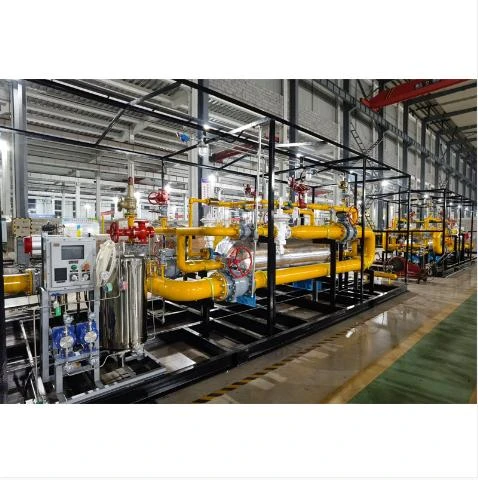
Dec . 17, 2024 06:14
Back to list
Enhancing Gas Efficiency with Advanced Booster Technology for Optimal Performance
Understanding Gas Boosters Enhancing Efficiency in Gas Handling Systems
Gas boosters are essential devices in various industrial applications, particularly in the oil and gas sector, as well as in specialized manufacturing processes. These devices serve a critical role in enhancing the pressure of gases, which can improve efficiency and streamline operations across different systems.
What is a Gas Booster?
A gas booster is a mechanical device that increases the pressure of a gas from a lower inlet pressure to a higher outlet pressure. It is designed for gases such as air, natural gas, nitrogen, and other non-corrosive gases. Unlike compressors that are generally used for compressing gases to a smaller volume, gas boosters focus solely on increasing the pressure without significant volume reduction.
How Gas Boosters Work
Gas boosters operate on the principle of positive displacement. They utilize a piston or diaphragm to compress the gas within a designated chamber. As the piston moves, it pushes the gas into a smaller volume, thereby increasing its pressure. Most gas boosters are powered by electric motors, which provide the necessary mechanical energy to move the piston.
The efficiency of a gas booster is pivotal. Many modern gas boosters feature advanced designs that allow for high flow rates with minimal energy consumption, making them suitable for various applications. Some models even include features such as variable speed drives that enable users to customize performance based on specific needs.
Applications of Gas Boosters
Gas boosters are used in a myriad of applications. One of the most common uses is in the oil and gas industry, where they enhance gas pressure for pipeline transmission. This ensures that gas can travel long distances with minimal loss of pressure, which is crucial for transporting natural gas from production sites to processing facilities.
gas booster

In industrial manufacturing, gas boosters are often used in pneumatic systems, which rely on pressurized air for smooth operation. Whether it's for powering tools, moving materials, or aiding in assembly processes, gas boosters guarantee the necessary pressure levels for operational efficiency.
Additionally, gas boosters can serve in the medical field for applications such as delivering gases in respiratory devices, ensuring that patients receive the required levels of oxygen or other therapeutic gases at higher pressures.
Benefits of Using Gas Boosters
The primary benefits of gas boosters are increased efficiency, cost savings, and enhanced safety. By allowing gas to be transported at higher pressures, companies can reduce the size of pipelines and equipment needed, leading to lower material costs and installation expenses.
Furthermore, gas boosters can contribute to improved energy efficiency. By utilizing advanced technologies, such as energy recovery systems, they can minimize the energy required for gas compression, directly impacting operational costs.
Safety is another significant advantage. Gas boosters are designed to handle high pressures while maintaining system integrity and reducing the risk of leakage or failure. Many systems come equipped with safety features, including pressure relief valves and automated controls, which enhance operational safety.
Conclusion
Gas boosters play a vital role in modern gas handling systems across various industries. Their ability to efficiently increase gas pressure not only optimizes operational processes but also leads to cost and energy savings. As technology continues to evolve, the role of gas boosters will likely expand, incorporating even smarter and more efficient designs. The continuous improvement in gas booster technology underscores the importance of these devices in addressing the demands of the evolving industrial landscape.
Next:
Latest news
-
Safety Valve Spring-Loaded Design Overpressure ProtectionNewsJul.25,2025
-
Precision Voltage Regulator AC5 Accuracy Grade PerformanceNewsJul.25,2025
-
Natural Gas Pressure Regulating Skid Industrial Pipeline ApplicationsNewsJul.25,2025
-
Natural Gas Filter Stainless Steel Mesh Element DesignNewsJul.25,2025
-
Gas Pressure Regulator Valve Direct-Acting Spring-Loaded DesignNewsJul.25,2025
-
Decompression Equipment Multi-Stage Heat Exchange System DesignNewsJul.25,2025

